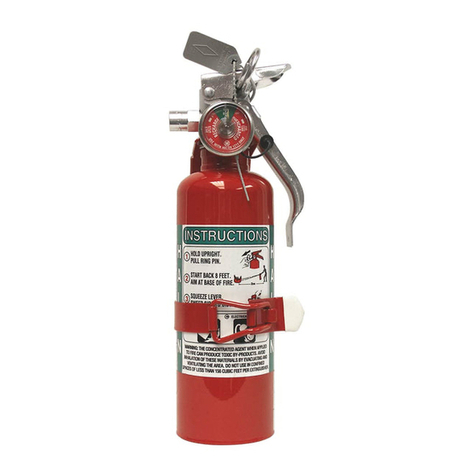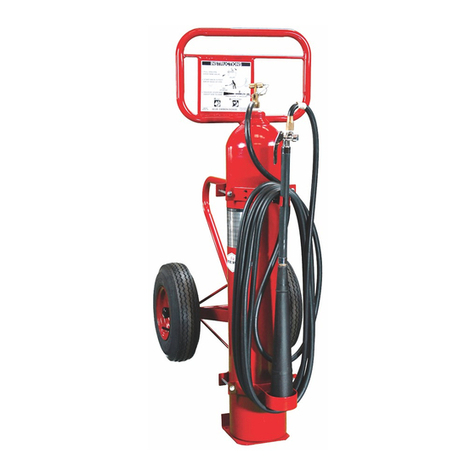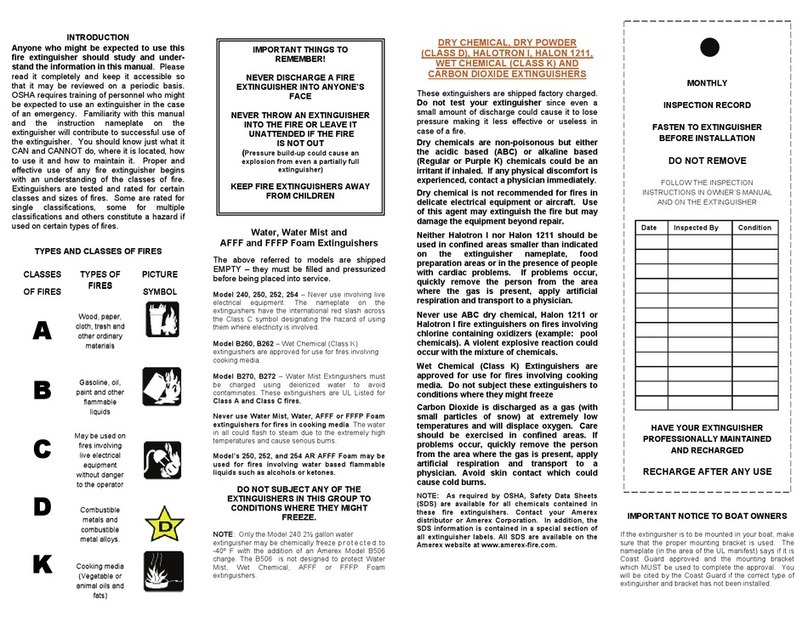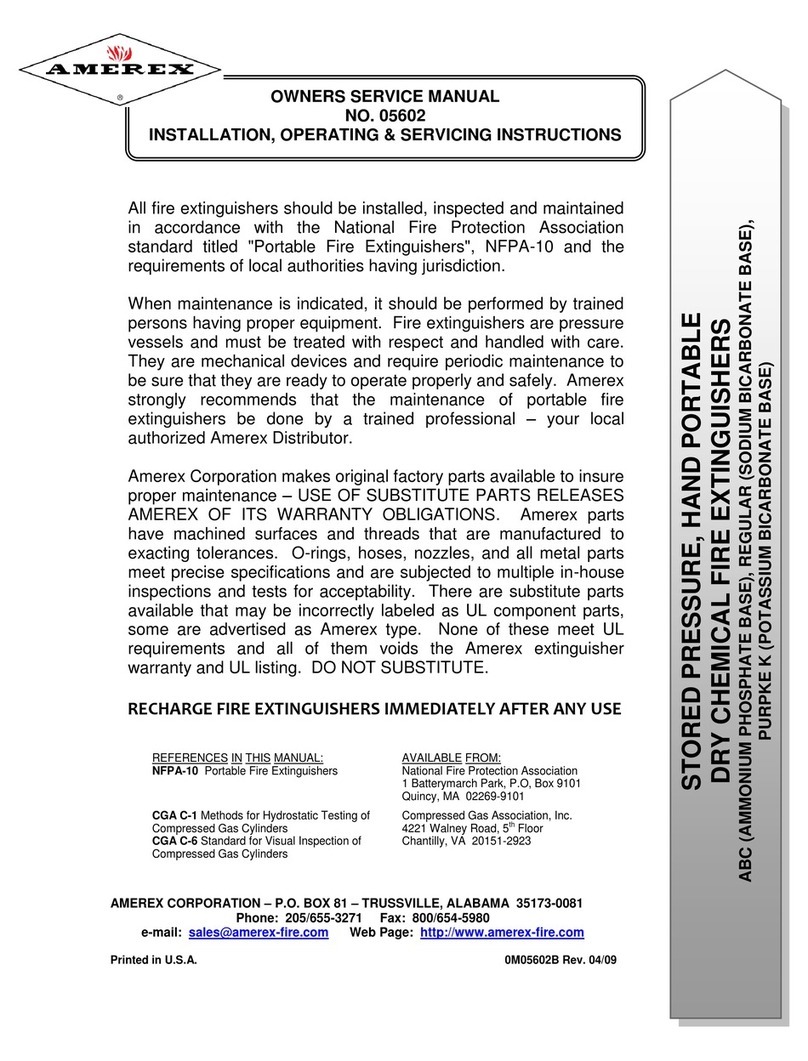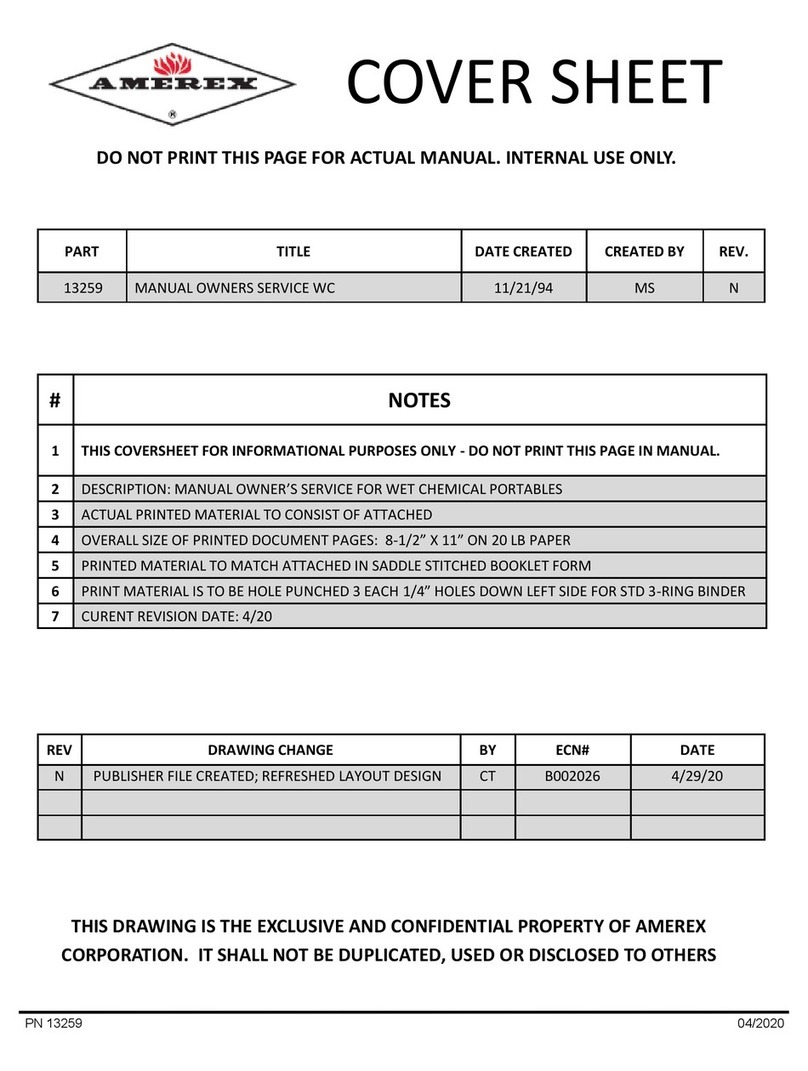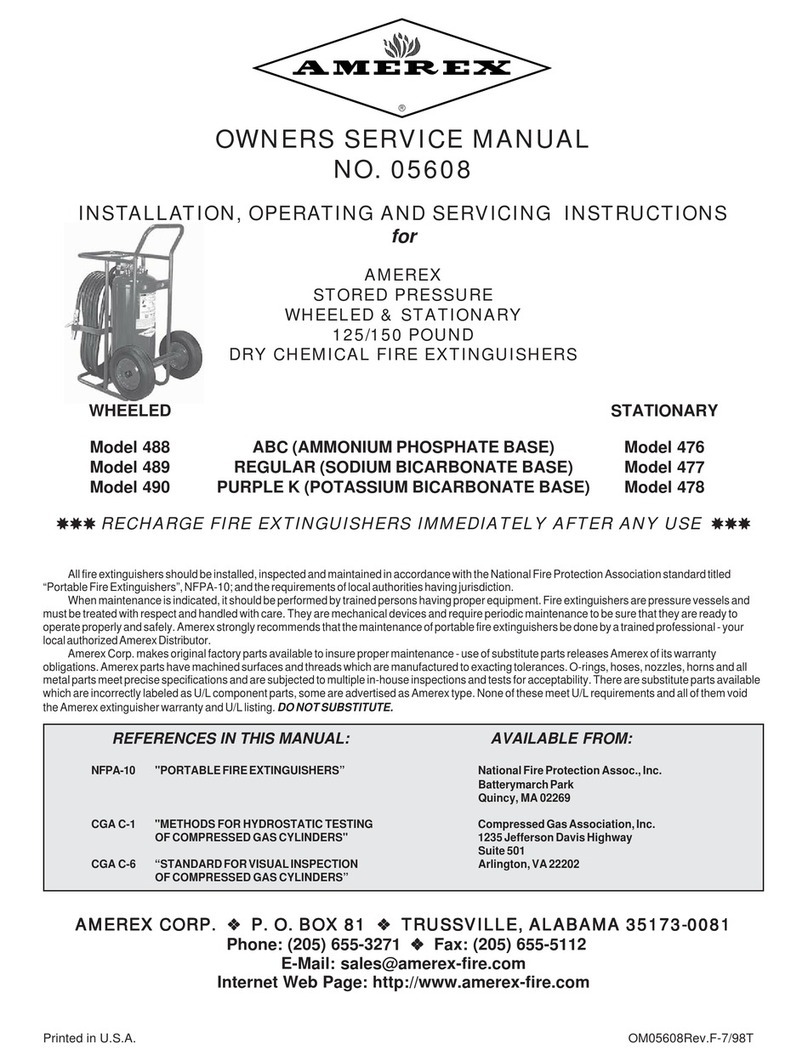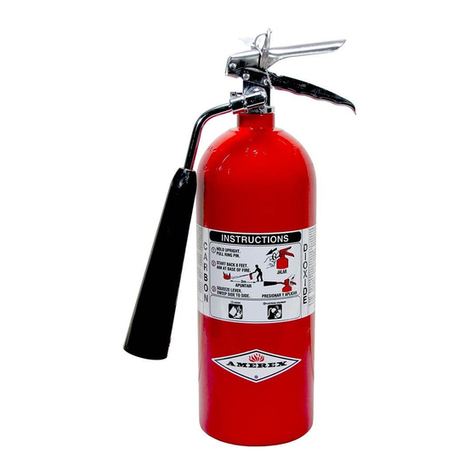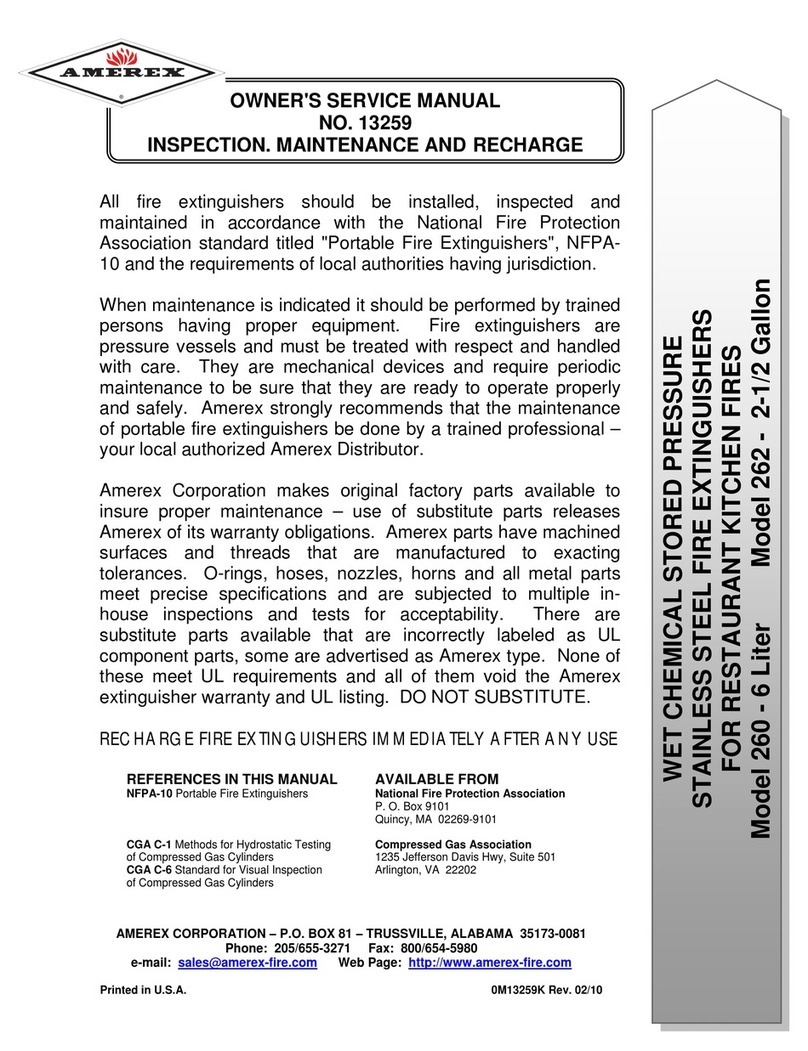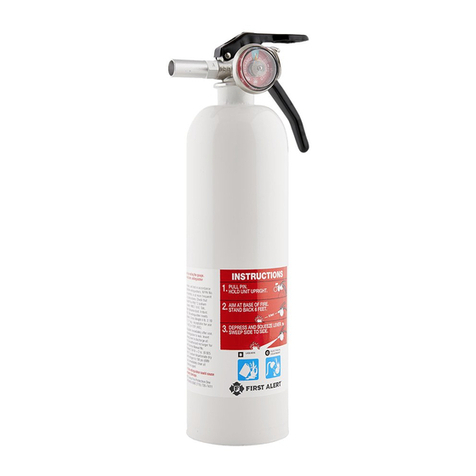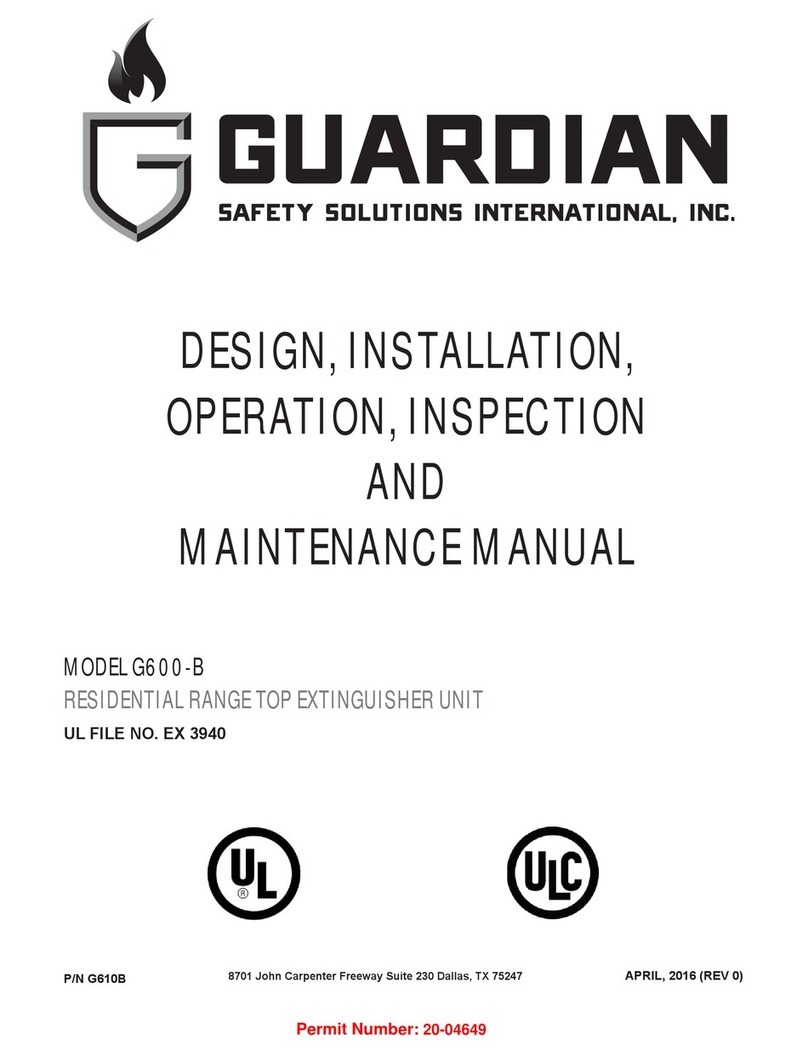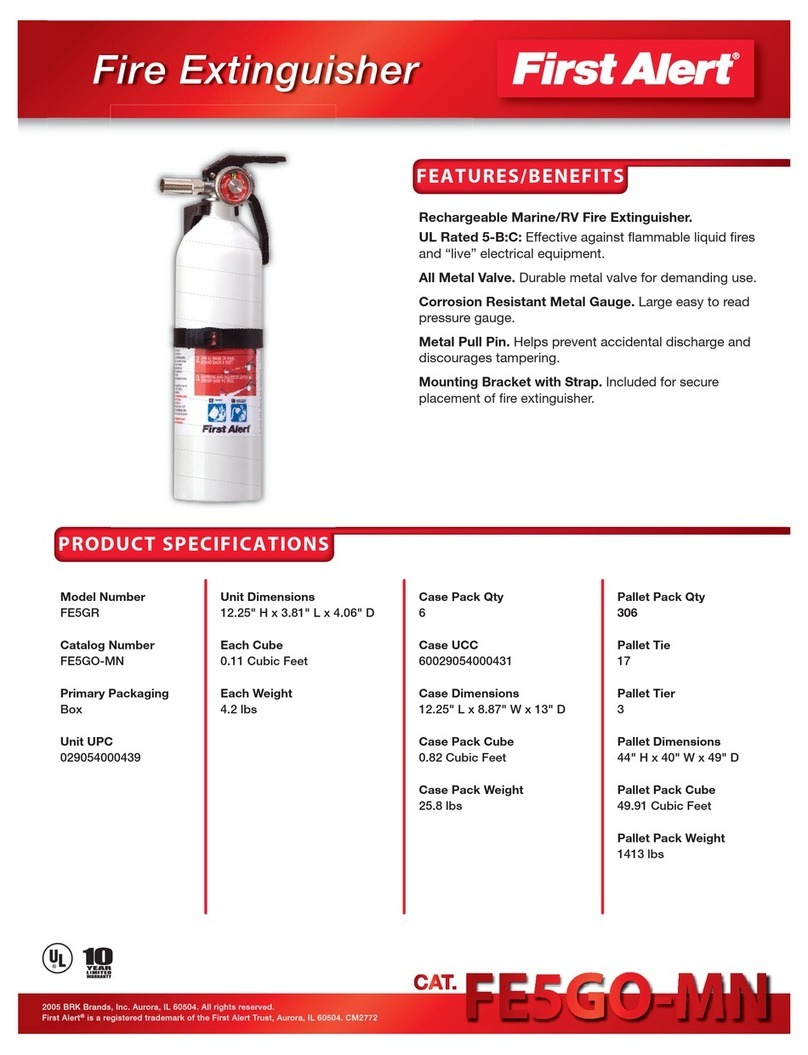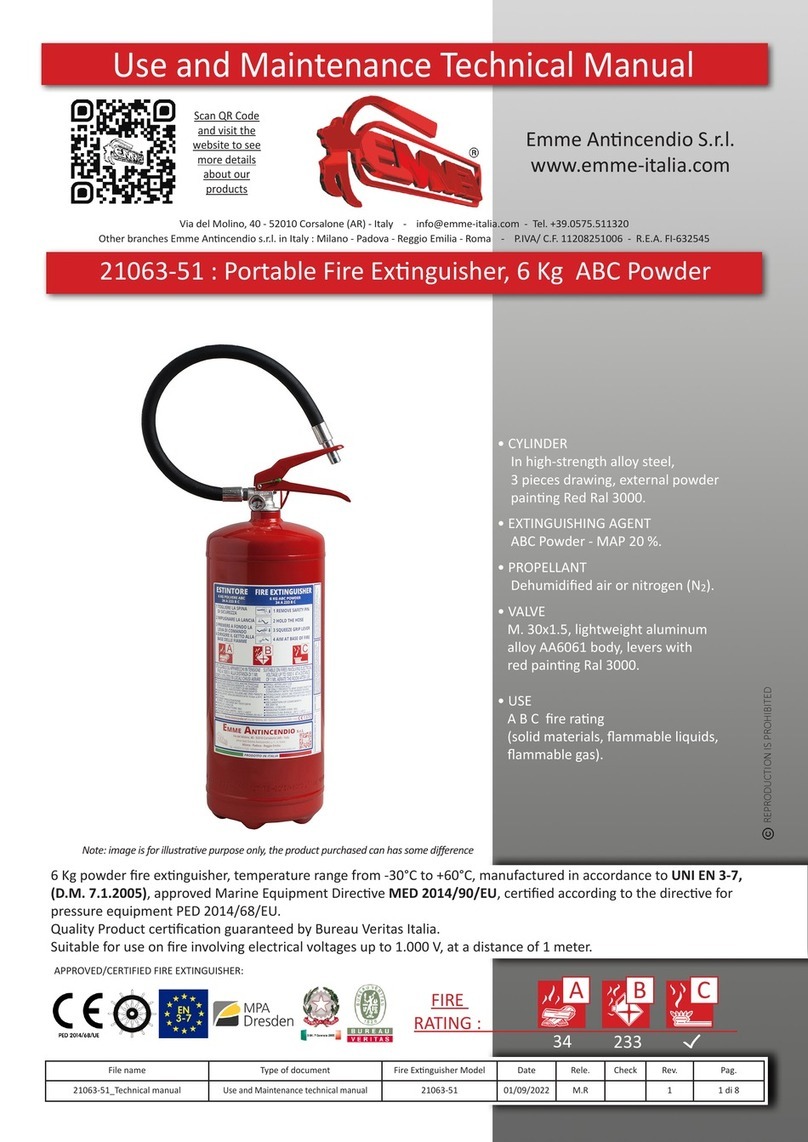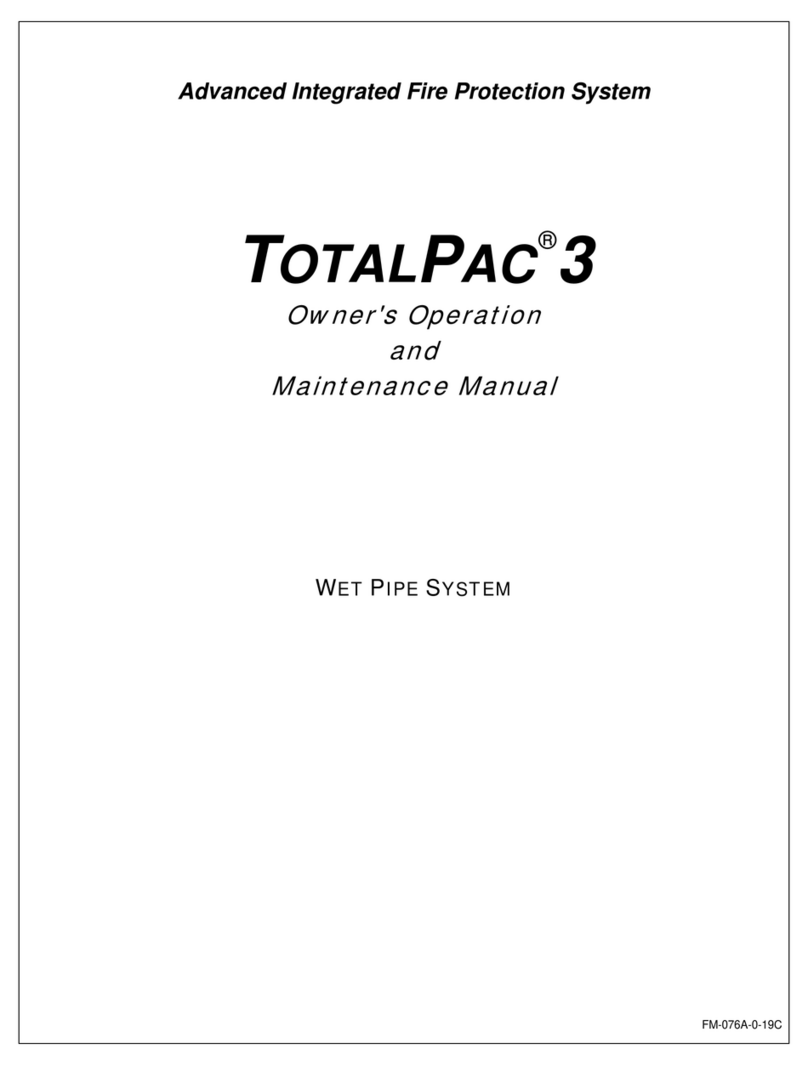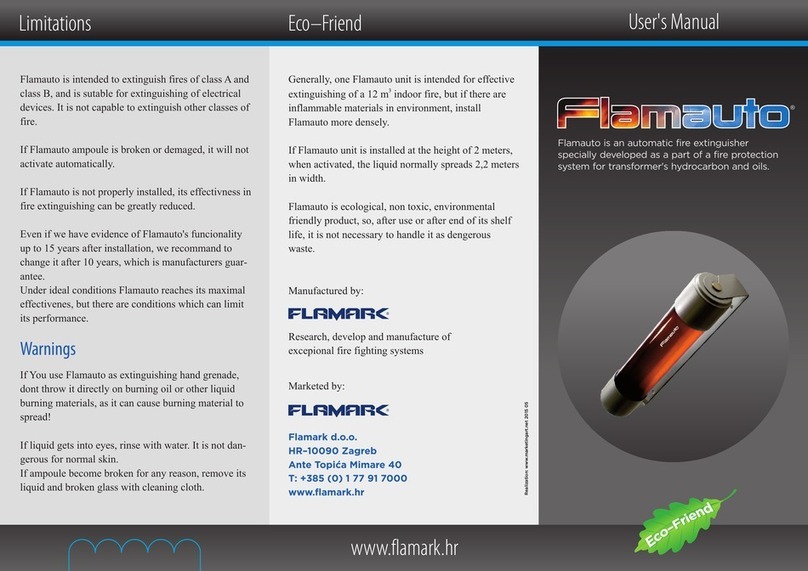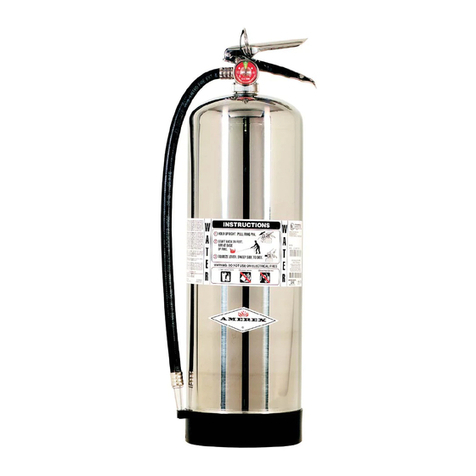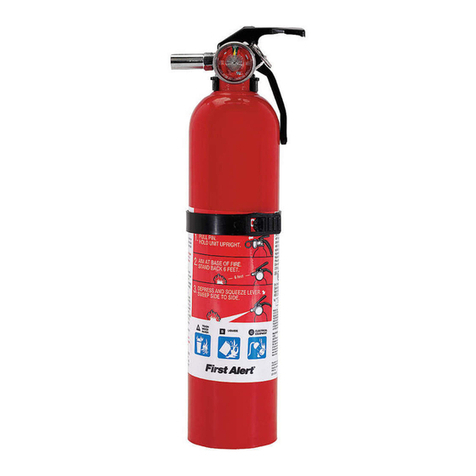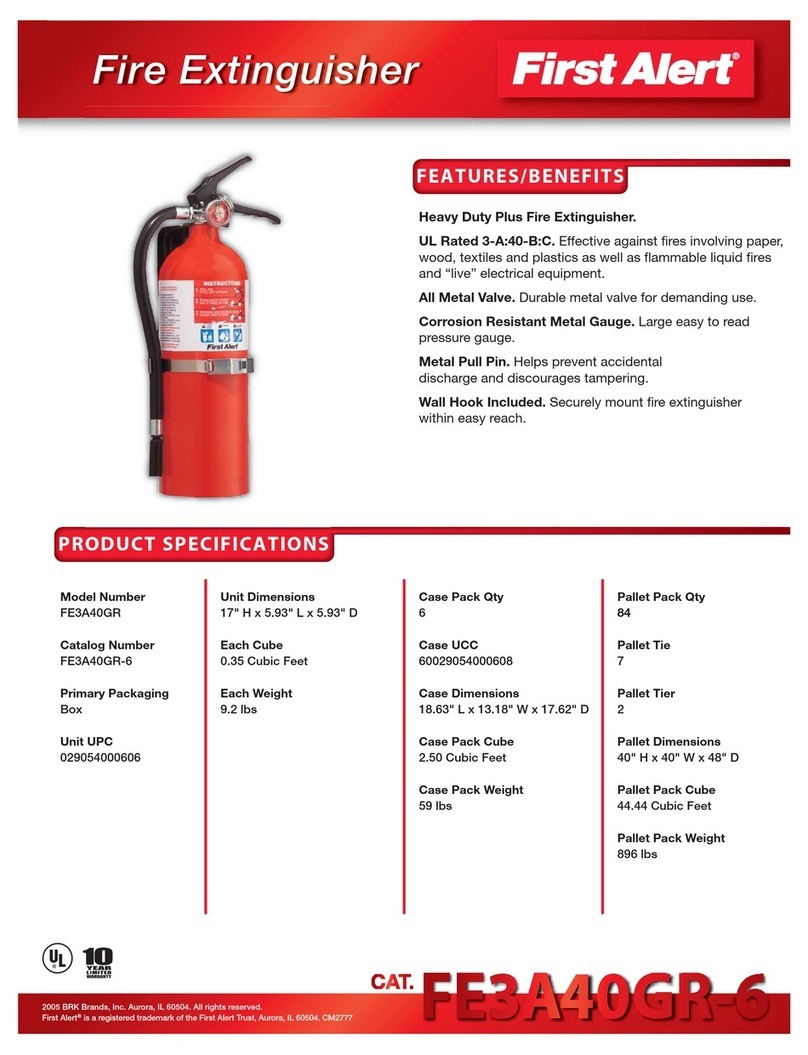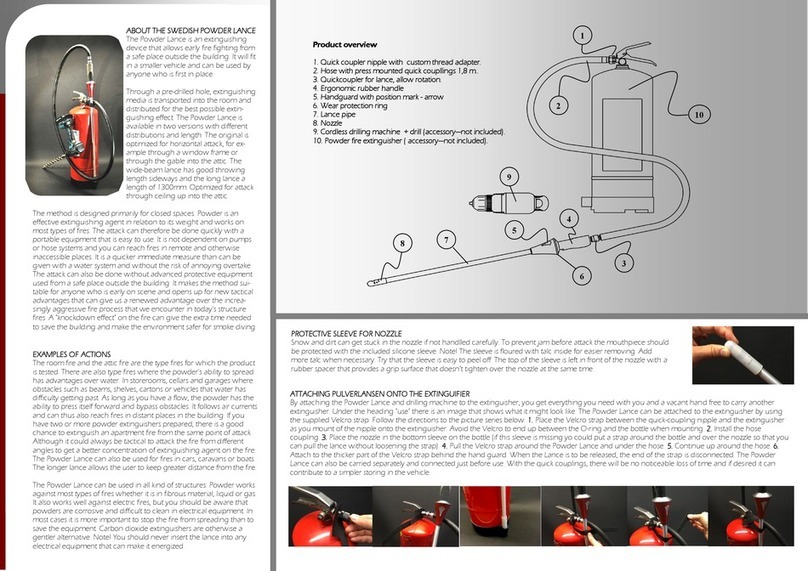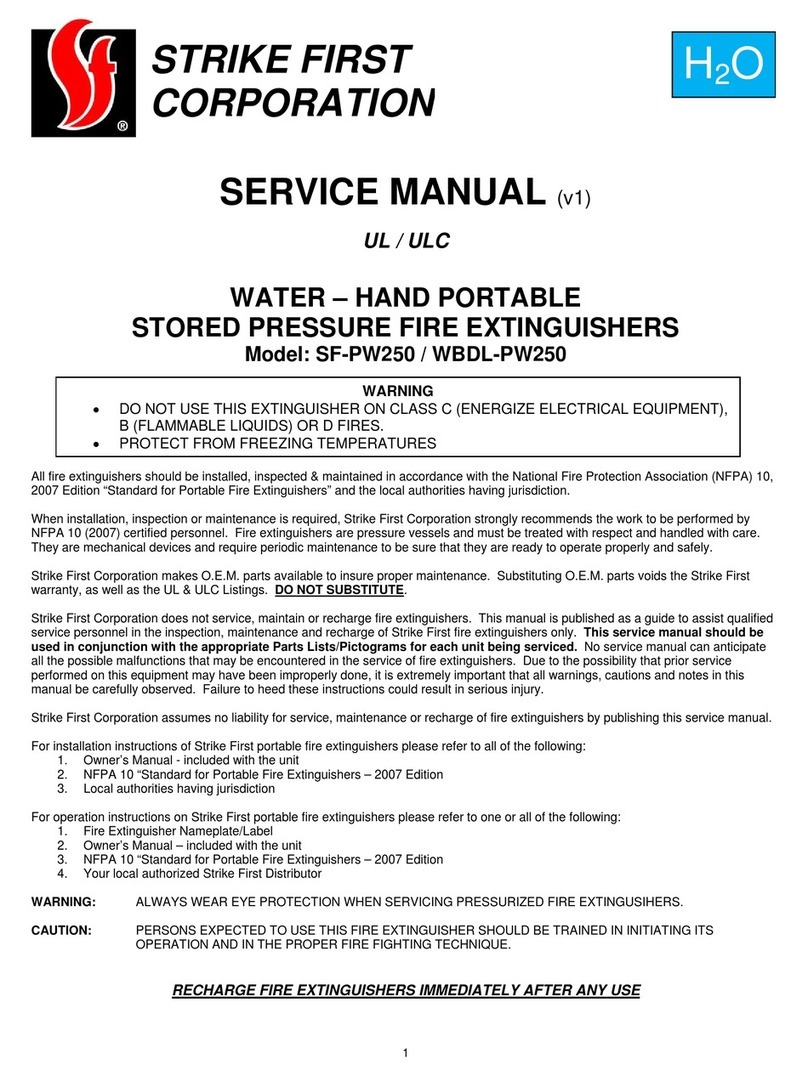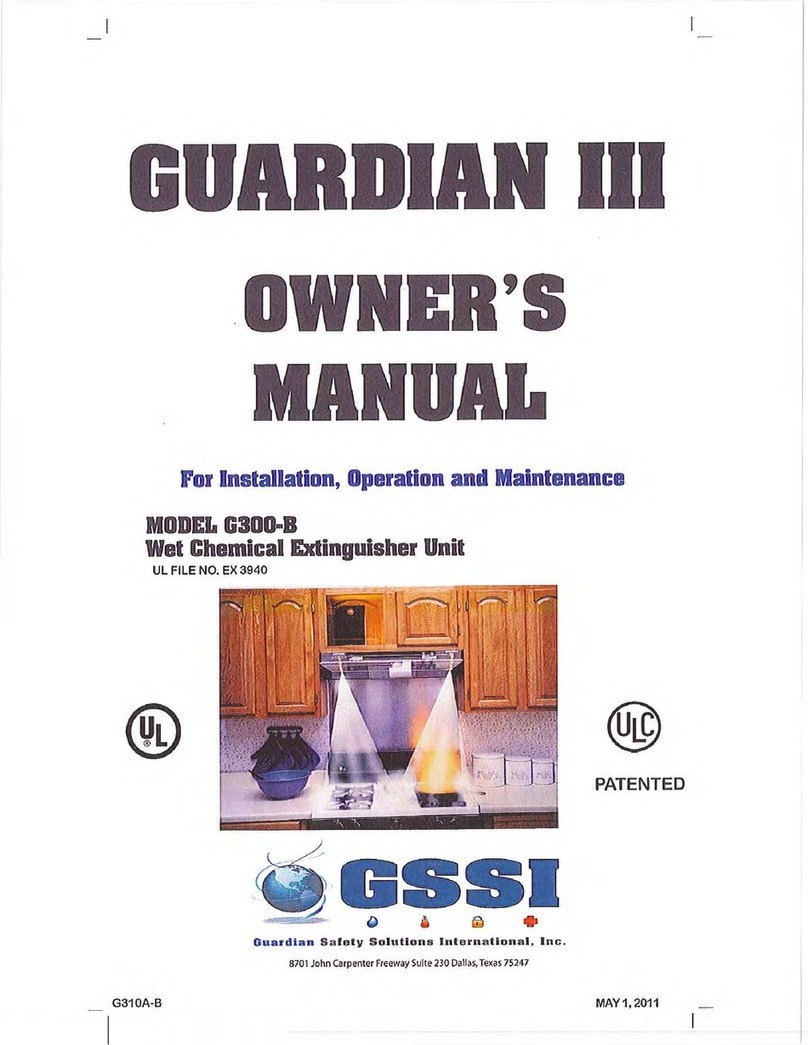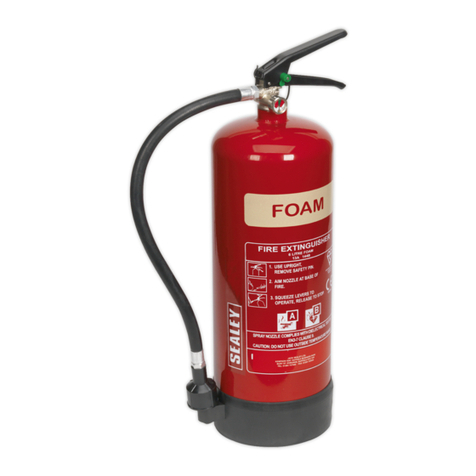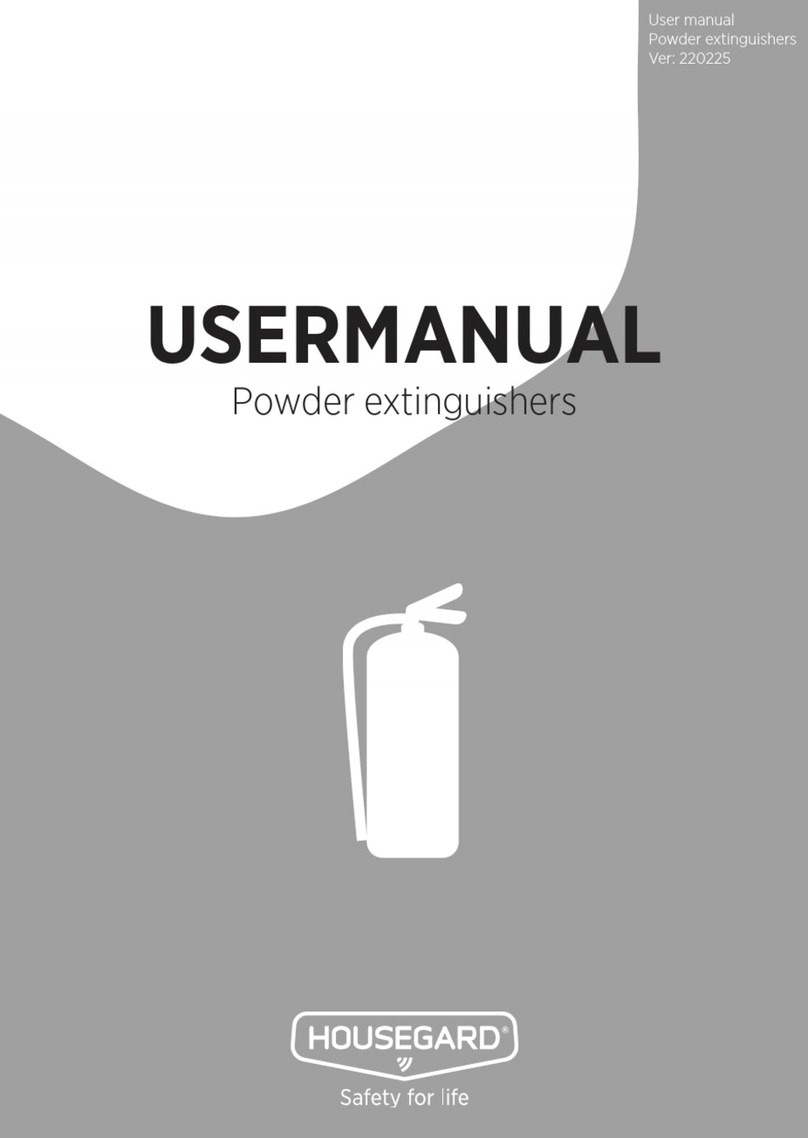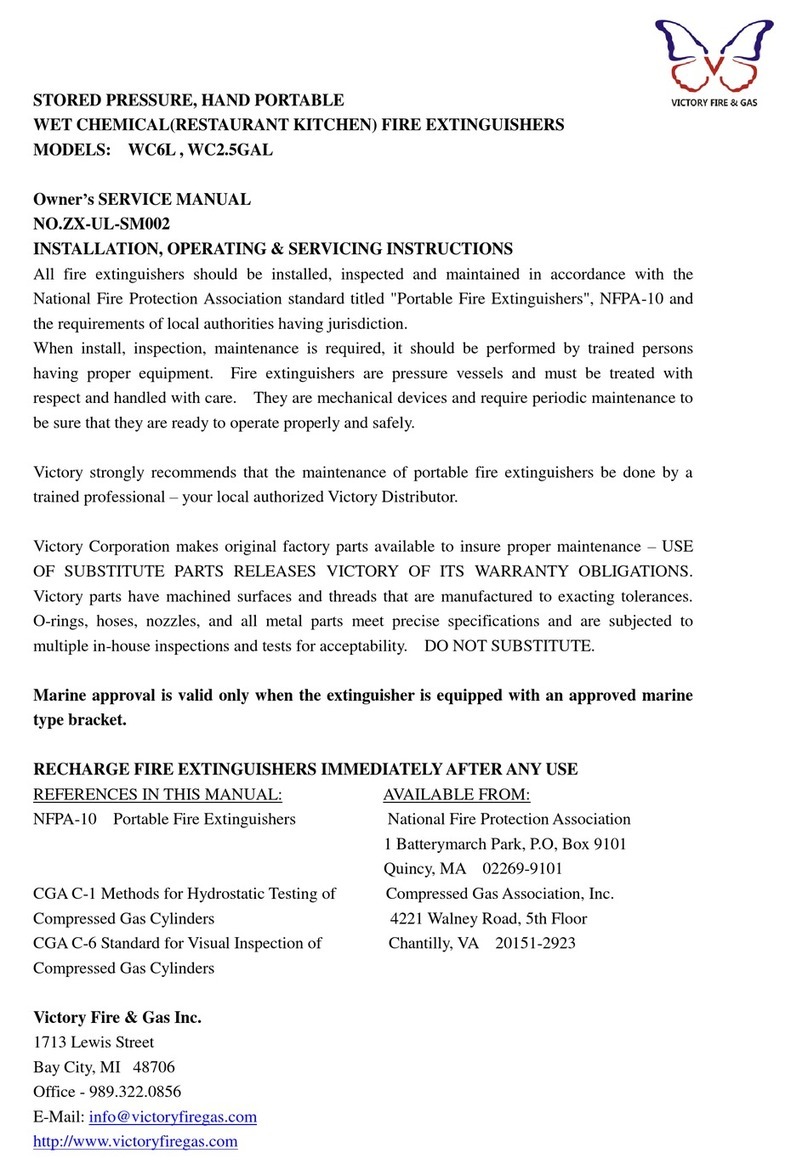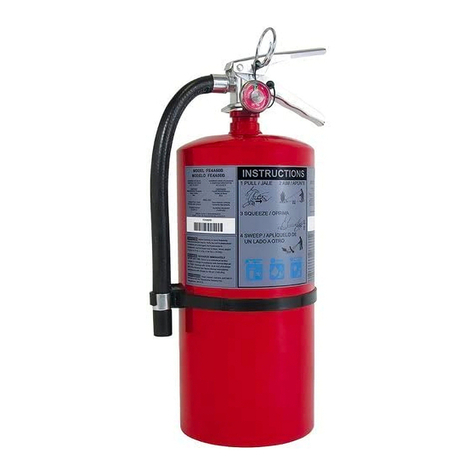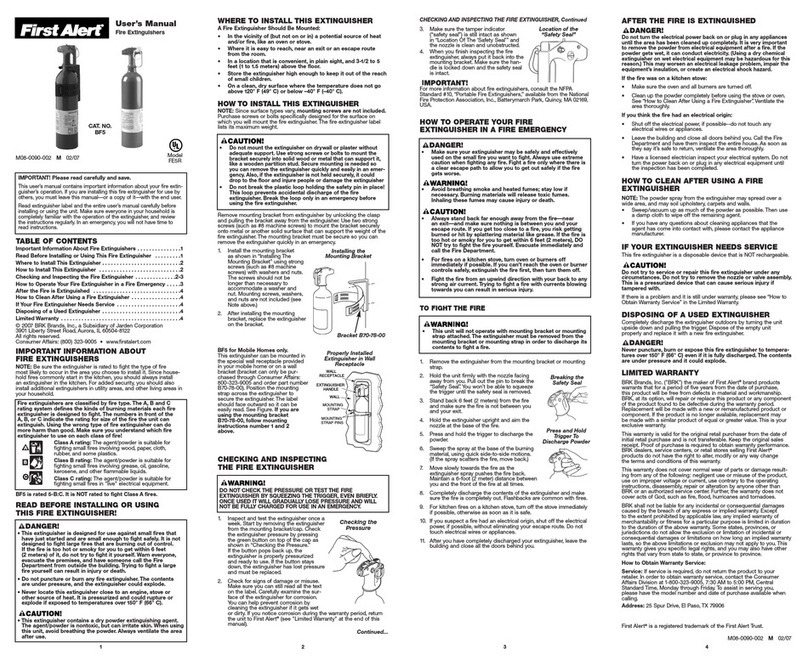PN 16672 04/2020
All fire extinguishers shall be installed, inspected and maintained in accordance with the National Fire
Protection Association standard titled "Portable Fire Extinguishers", NFPA 10 or The National Fire Code of
Canada and the requirements of local authorities having jurisdiction.
When maintenance is indicated, it shall be performed by trained persons having proper equipment. Fire
extinguishers are pressure vessels and must be treated with respect and handled with care. They are
mechanical devices and require periodic maintenance to be sure that they are ready to operate properly and
safely. Amerex strongly recommends that the maintenance of portable fire extinguishers be done by a trained
professional – your local authorized Amerex Distributor.
Amerex Corporation makes original factory parts available to insure proper maintenance – USE OF
SUBSTITUTE PARTS RELEASES AMEREX OF ITS WARRANTY OBLIGATIONS. Amerex parts have
machined surfaces and threads that are manufactured to exacting tolerances. o-rings, hoses, nozzles, and all
metal parts meet precise specifications and are subjected to multiple in-house inspections and tests for
acceptability. There are substitute parts available that may be incorrectly labeled as UL component parts,
some are advertised as Amerex type. None of these meet UL requirements and all of them voids the Amerex
extinguisher warranty and UL listing. DO NOT SUBSTITUTE.
RECHARGE FIRE EXTINGUISHERS IMMEDIATELY AFTER ANY USE
OWNER’S SERVICE MANUAL
INSTALLATION, OPERATING & SERVICING INSTRUCTIONS
MANUAL PN 16672
HALOTRON I WHEELED EXTINGUISHERS
MODELS B673, B674, B675
AMEREX CORPORATION – P.O. BOX 81 – TRUSSVILLE, ALABAMA 35173-0081
Phone: 205/655-3271 Fax: 800/654-5980
e-mail: sales@amerex-fire.com Web Page: http://www.amerex-fire.com
REFERENCES IN THIS MAUNUAL:
NFPA 10 Portable Fire Extinguishers
JJJJJJJJJJJJJJJJJJJJJJJJJJJJJJJJJJJJJJJJJJJJ
CGA C-1 Methods for Pressure Testing Compressed Gas
Cylinders
CGA C-6 Standard for Visual Inspection of Steel
Compressed Gas Cylinders.
National Fire Code of Canada
AVAILABLE FROM:
National Fire Protection Association, 1 Batterymarch Park,
Quincy, MA 02169-7471
Compressed Gas Association, 14501 George Carter Way,
Chantilly, VA 20151-2923
Compressed Gas Association, 14501 George Carter Way,
Chantilly, VA 20151-2923
National Research Council Canada, 1200 Montreal Road,
Ottawa, ON K1A 0R6 Canada
AMEREX CORPORATION DOES NOT SERVICE, MAINTAIN OR RECHARGE FIRE EXTINGUISHERS.
THIS MANUAL IS PUBLISHED AS A GUIDE TO ASSIST QUALIFIED SERVICE PERSONNEL IN THE
INSPECTION, MAINTENANCE AND RECHARGE OF AMEREX FIRE EXTINGUISHERS ONLY. NO
INSTRUCTION MANUAL CAN ANTICIPATE ALL POSSIBLE MALFUNCTIONS THAT MAY BE
ENCOUNTERED IN THE SERVICE OF FIRE EXTINGUISHERS. DUE TO THE POSSIBILITY THAT PRIOR
SERVICE PERFORMED ON THIS EQUIPMENT MAY HAVE BEEN IMPROPERLY DONE, IT IS
EXTREMELY IMPORTANT THAT ALL WARNINGS, CAUTIONS AND NOTES IN THIS MANUAL BE
CAREFULLY OBSERVED. FAILURE TO HEED THESE INSTRUCTIONS COULD RESULT IN SERIOUS
INJURY. AMEREX ASSUMES NO LIABILITY FOR SERVICE, MAINTENANCE OR RECHARGE OF FIRE
EXTINGUISHERS BY PUBLISHING THIS MANUAL THIS MANUAL IS ATTACHED TO EVERY NEW
EXTINGUISHER SHIPPED FROM THE FACTORY. IT CONTAINS VALUABLE INFORMATION WHICH
SHALL BE STUDIED BY EVERYONE WHO WILL USE OR SERVICE THE EXTINGUISHER. THIS
MANUAL SHALL BE STORED IN A CONVENIENT LOCATION FOR EASY REFERENCE.
